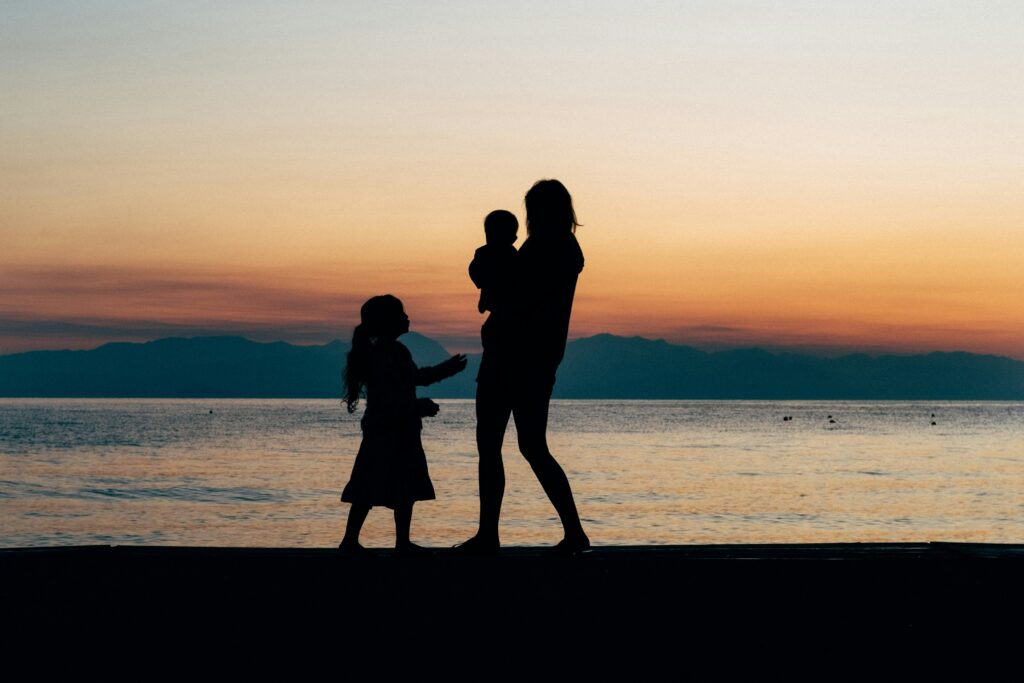
A family of three. FILE PHOTO from Dylan Nolte/Unsplash
CEBU CITY, Philippines — The Department of Social Welfare and Services (DSWD) describes adoption as a ‘socio-legal process of providing a permanent family to a child whose parents have voluntarily or involuntarily relinquished parental authority over the child.’
It is also ‘for children who cannot be reared by their biological parents and who need and can benefit from new and permanent family ties.’
Last 2022, former President Rodrigo Duterte signed into law (RA 11642) that established the National Authority for Child Care (NACC), an attached agency to the DSWD that is mandated ‘to exercise powers and functions as the central authority in domestic administrative adoption, intercountry adoption, and alternative child care.’
And during the Independence Day this year, NACC, through its regional office in Central Visayas, conducted an adoption forum in SM Seaside City Cebu to educate the public about their agency as well as to the process of adopting legally.
Concepcion Solera, officer-in-charge of the regional office of NACC (RACCO), said that before the passage of RA 11642, domestic adoptions had to undergo court proceedings which would take from three to seven years.
“Mas mahal siya kasi nga yung expensive na bayarin sa mga lawyer,” Solera said.
(It is really expensive because of the high payments of the lawyers.)
How is it done?
But with passage of RA 11642 that established NACC, the adoption process is getting easier and more accessible.
“Administrative na siya in which dadaan na siya through the NACC in which the executive director will approve and issue the order of adoption. The turnaround time is six to nine months. Months lang po talaga yung turnaround period ng domestic-administrative adoption,” she said.
(That is administrative which will go through the NACC in which the executive director will approve and issue the order of adoption. The turnaround time is six to nine months. The turnaround period of domestic administration adoption is only months.)
“Yung pinakamatagal natin na na-experience ngayon [ay] seven years dahil nag withdraw sila sa court proceedings and they transferred to the administrative adoption and now they have the order for adoption, issued na from NACC,” she added.
(The longest that we experience now is seven years because they withdrew from court proceedings and transferred to the administrative adoption and now they have the order for adoption, issued from the NACC.)
Since the agency’s establishment in 2022, they already issued 634 certifications declaring a child ‘legally available for adoption’ and 68 of it came from Central Visayas in 2023.
As of 2024 in Central Visayas, there are already approximately 55 children placed for adoption. They also received 25 petitions for adoption.
Overall, the agency has issued around 300 orders of adoption, be it a regular adoption, where the children were matched through adoptive parents; step-parent adoption, relative adoption, and adult adoption.
Adopting in Central Visayas?
Those who would want to adopt children here, Solera said that they could visit their office in Mandaue City or to the nearest municipal or city social welfare office because all local government units were already informed and oriented about RA 11642.
“The social worker will assess them, yung motivation nila, yung intention nila to adopt. Kasi, yan talaga ang hahanapin ng social worker…Kasi baka in-adopt mo lang pero iba yung motivation mo,” Solera said.
(The social worker will assess them, their motivation, their intention to adopt. Because that is what the social worker will really look for…because who knows you might adopt but you have a different motivation for doing it.)
“Kung mag-aalaga ka ng bata dapat from the heart talaga,” she added.
(If you care for a child then it should be from the heart.)
She said that couples were not the only eligible people who could adopt children but also those who were single, and members of the LGBTQIA++.
Who may be adopted?
According to NACC, any Filipino children aged under 15 years old who “has been voluntarily or involuntarily committed to the Department as dependent, abandoned or neglected may be the subject of inter-country adoption except when:
The child is part of a sibling group, where one or more is below 15 years old;
If the application for adoption of a child was filed before the child reached the age of 15;
Special Home Finding was initiated before the child’s 15th birthday; and
Other situations where the intent to adopt was manifested before the child reached 15.
As for the relative adoption, a child within the 4th degree of consanguinity or affinity shall be subject to inter-country adoption, according to NACC.
“Children subject for relative inter-country adoption shall be officially endorsed by the DSWD Field Office which has jurisdiction over the child and such endorsement shall serve as the child’s clearance for inter-country adoption,” the agency said.
Sources:
LOCAL ADOPTION: REQUIREMENTS AND PROCEDURES

